For a few years now, I’ve found myself lured in by natural Easter egg dye. How cool is it that you can boil vegetables, spices, berries, and more, and get gorgeous, naturally-colored Easter eggs – in every color of a rainbow, and then some – as a result?!
But I always went a little crazy. Okay – a lot crazy. I’d raid the produce department, and then I’d get home and no pot or pan would remain unturned. With colorful brews brewing away on every available surface, my kitchen would look like a witch’s coven. And I’d think, okay, so it’s fun in theory to geek out over naturally-dyed eggs, but this is just ridiculous. I don’t have time for this. I’d think, next year, I’ve got to simplify.
So this year, I did it! I simplified. I made exactly three springy, pastel, perfect-for-Easter shades for our eggs – pink, yellow, and pale blue. And this version of natural Easter egg dye was easy – low-fuss and no-muss.
Making my vegetable-based dyes this year was so simple, I was almost stunned! The day before, I brewed up the dyes, then I sealed them up in mason jars and refrigerated them until the following day, at which point my giddy two-year-old and I happily dyed the eggs.
Hands down, our favorite hue is the gorgeous true blue that, remarkably, is created with red cabbage. The pink eggs are compliments of a beet; for yellow, I needn’t look further than my spice cabinet for some ground turmeric (which, actually, is not technically a vegetable – it’s a herbaceous perennial related to ginger, but it’s close enough).
My two-year-old enjoyed dying the eggs more than I expected. It was so fun for her to plop the eggs into the dye and see how they would change color after a minute – or two, or 10, or 30. Yes – I ended up with a few cracked eggs – she is only two, after all. Oh well.
And you know what? My little one didn’t care that we didn’t end up with 24 different shades. Blue, yellow, and pink were plenty exciting – for her, and for me, too.
Would you like to know how to to make natural egg dye yourself? It’s easy – so, so easy. I promise. Especially when you don’t go nuts like I used to do.
Here’s a quick graphic with the ingredients and dye times to achieve the pretty pastel shades I was going for. And below that, I’ve provided more detailed instructions.
Lesson officially learned: All you’ve got to do is keep it simple, and coloring your own Easter eggs with natural vegetable dyes is a piece of cake.
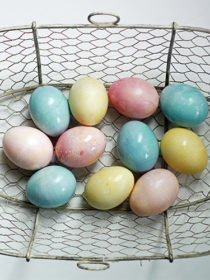
How to Make Natural Easter Egg Dye
Ingredients
- One dozen hard-boiled white eggs
- 1 teaspoon olive oil (optional)
Blue dye:
- 1/2 head red cabbage (cut into 1/8ths (about 1 pound))
- 2 cups water
- 1 tablespoon white vinegar
Yellow dye:
- 2 teaspoons ground turmeric
- 2 cups water
- 1 tablespoon white vinegar
Pink dye:
- 1 medium beet (washed and quartered)
- 2 cups water
- 1 tablespoon white vinegar
Instructions
- Before starting the actual egg-dying process, I recommend preparing a safe area to handle these highly-staining dyes – they will mark everything from clothes to kitchen counters! So be sure to cover your table or counter with plastic, an old throw-away tablecloth, or lots of newspapers before beginning.
Blue Easter egg dye:
- Place cabbage and water in a medium-sized pot over high heat. Bring to a boil, then cover and remove from heat. Let sit for 1 hour. Pour mixture through a colander to remove cabbage; discard solids. Stir in vinegar. Your dye is ready to use.
- To dye, fill a narrow glass or mason jar about half full with dye, and gently lower in the egg. Let sit for about 20 minutes, turning occasionally. Proceed to Finishing step. Note: the egg will appear lavender when you first remove it from the dye, but the shade should transform to a more blue-ish shade within a few minutes.
Yellow Easter egg dye:
- Place turmeric and water in a medium-sized pot over high heat. Bring to a boil. Remove from heat and cover. Let sit until cool. Stir in vinegar. Your dye is ready to use.
- Fill a narrow glass or mason jar about half full with the dye, and gently lower in the egg. Let sit for about 30 minutes, turning occasionally, until you’ve reached the shade of pale yellow that you desire. Proceed to Finishing step.
Pink Easter egg dye:
- Place beet and water in a medium-sized pot over high heat. Bring to a boil. Cover and remove from heat. Let sit for 60 minutes. Drain through a colander to remove beet pieces and discard solids. Stir in vinegar. Your dye is ready!
- To dye, fill a narrow glass or mason jar about half full with the dye, and gently lower in the egg. Let sit for about 2 minutes, turning occasionally, until you’ve reached the shade of pink that you desire. Proceed to Finishing step.
Finishing the eggs:
- Using a slotted spoon, carefully remove the eggs from the dye and set them in a shallow bowl. Or if you have wire egg holders, now is a great time to use them! Turn the eggs occasionally to help them dry, which should take about 20 minutes or so. Once they’re mostly dry, wipe off any excess dye with a paper towel. If desired, gently rub a little olive oil onto each egg to add a bit of a pretty sheen.
- Keep your eggs in the refrigerator just as you would any hard-boiled eggs!


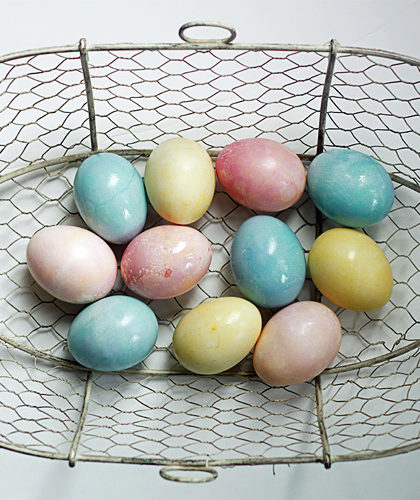
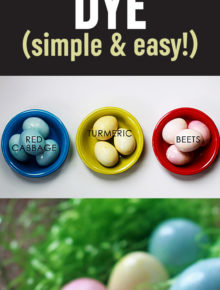
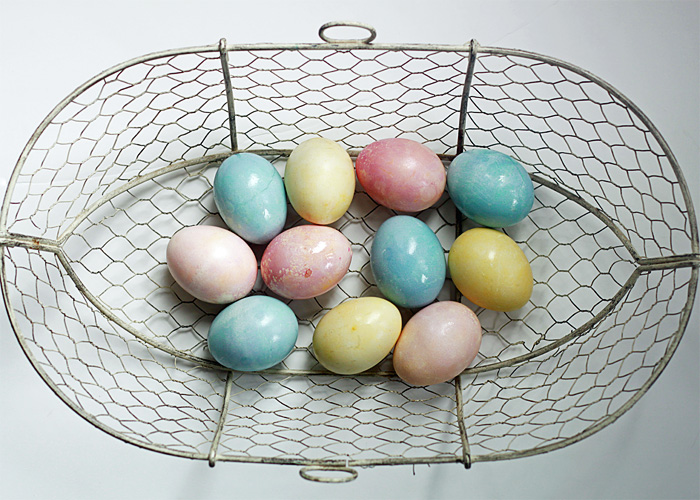
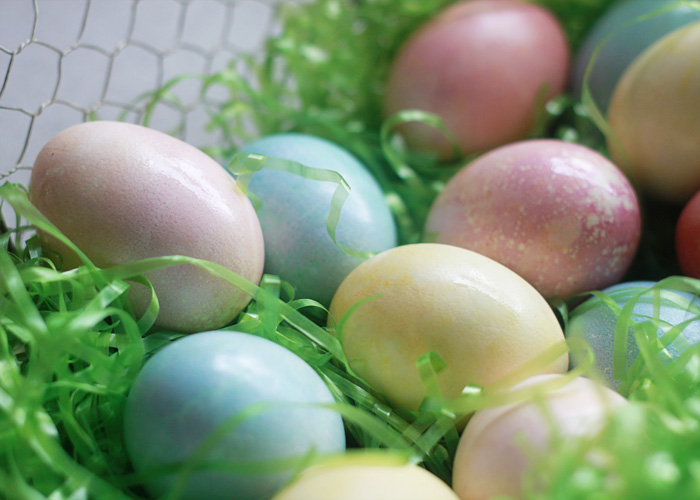
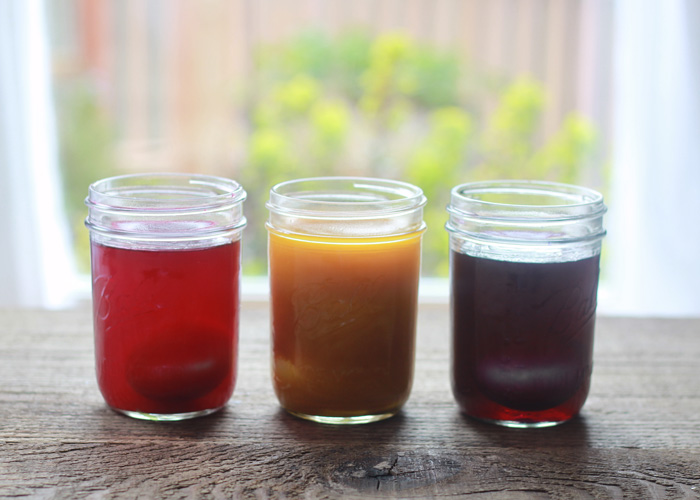
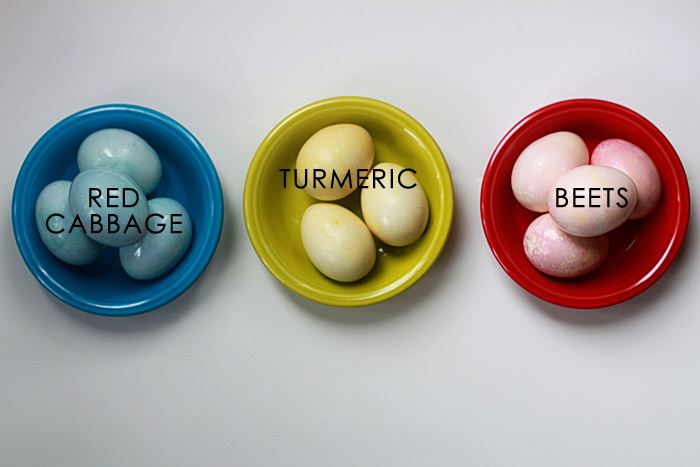

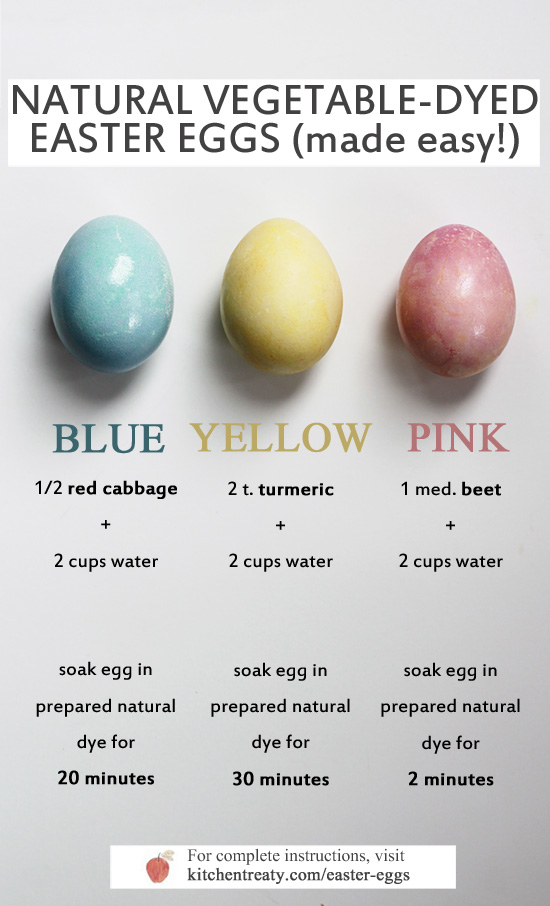
 I’m so glad you’re here! I’m a vegetarian home cook, certified plant-based pro, and mom. I’m married to an enthusiastic carnivore, and my mission is to achieve peace in the kitchen – one tasty recipe at a time. These days, with a name like mine, I also try not to ask to speak to the manager.
I’m so glad you’re here! I’m a vegetarian home cook, certified plant-based pro, and mom. I’m married to an enthusiastic carnivore, and my mission is to achieve peace in the kitchen – one tasty recipe at a time. These days, with a name like mine, I also try not to ask to speak to the manager.
Love it! Beautiful pastel colors!
Thank you so much! 🙂
Pingback: How To Of The Day Round-Up: April 14-18, 2014 -
My kids will have so much fun dyeing the eggs this way. Thanks for the inspiration.
Absolutely beautiful!! AND thank you for sharing… I am going to try it! 🙂
Thank you for making the process look so easy. I’ve been searching all over the web for a way to naturally dye eggs and they all seem to daunting and ridiculously messy. Your eggs look beautiful.
Hi there
Thanks so much for sharing this lovely tip for colouring eggs for Easter! My only question is which colour eggs do you start with, white eggs? Reason for asking is that here in the UK we mainly have brown colour eggs and I’m wondering if the colour would still take on these eggs? Many thanks, Samantha
Ah yes, good question! Yes, we use white eggs for the most vibrant color. Brown eggs will change color and still be beautiful but will be more muted. Thanks so much for asking – I’m going to update the post to specify white eggs!
I’m so excited about this natural Easter Egg dying…
My supermarket did not have fresh beets:(
What do you think about using canned beets??
Thank you, Sally
I think canned beets will work too! I’d actually recommend keeping the liquid the beets came in and using that too. Have fun!